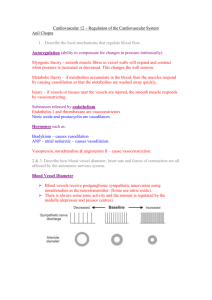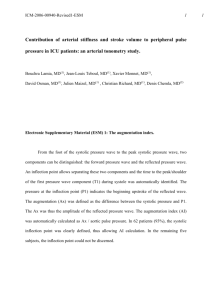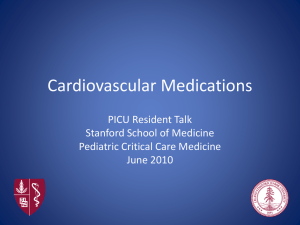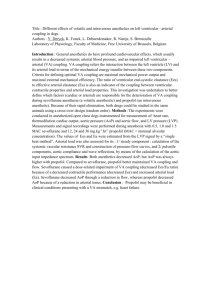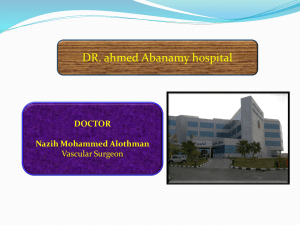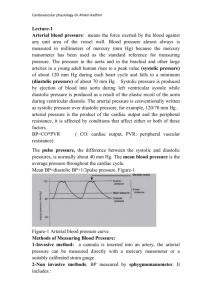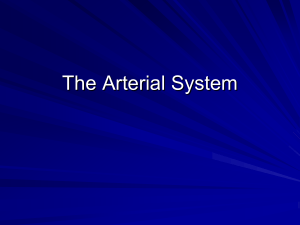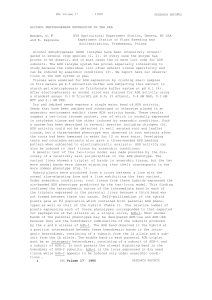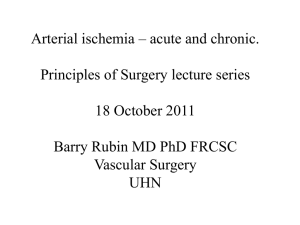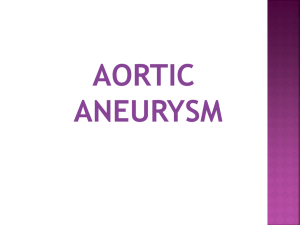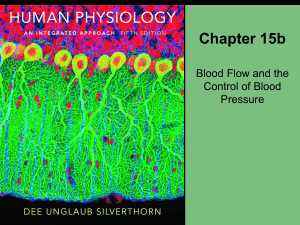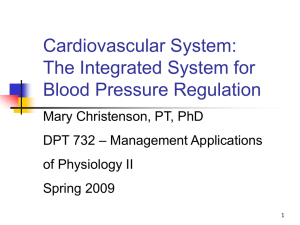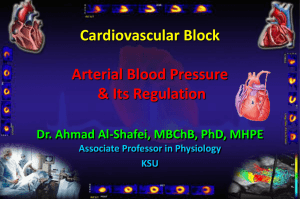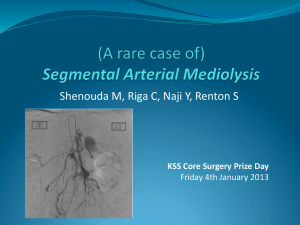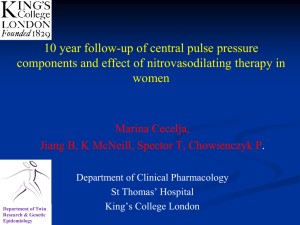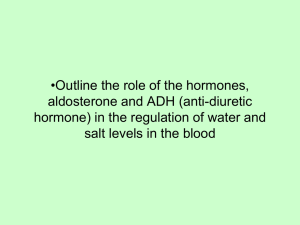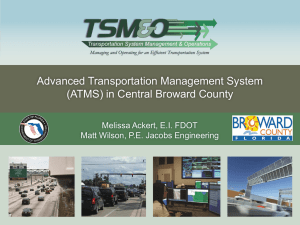ARTERIAL PRESSURE CONTROL and VENOUS RETURN
advertisement
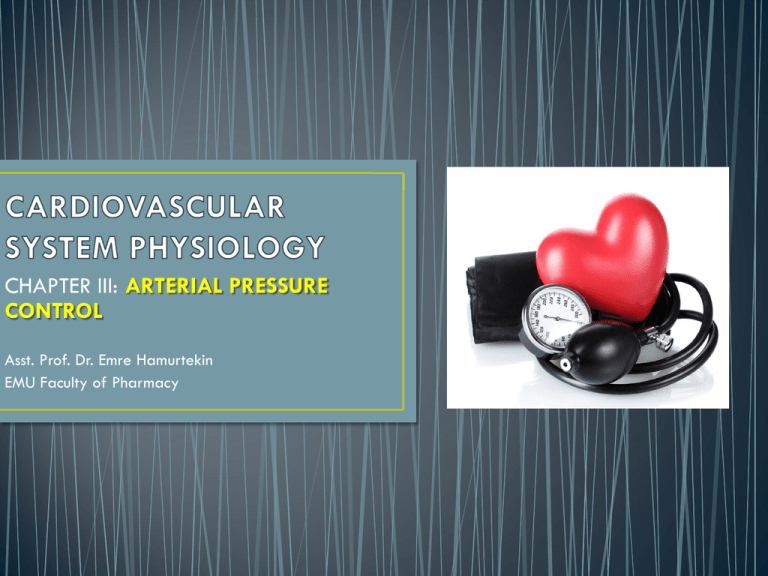
CHAPTER III: ARTERIAL PRESSURE CONTROL Asst. Prof. Dr. Emre Hamurtekin EMU Faculty of Pharmacy • CVS system includes two distinct pathways for monitoring and maintaining arterial pressure: Baroreceptor Reflex (fast activating) Sensors – Integrator – Effector mechanisms Changes in blood volume by renal function (slow activating) • Sensors: I. II. III. High-pressure arterial baroreceptors Low-pressure cardiopulmonary receptors Chemoreceptors • Clusters of sensory nerve endings • Aortic baroreceptors and carotid baroreceptors are the primary means of detecting changes in MAP. • They respond to arterial wall stretch. • Aortic baroreceptors aortic nerve vagus nerve • Carotid sinus sinus nerve glossopharyngeal nerve • The sensory nerves respond to stretching of the arterial wall because of the increasing MAP with graded receptor potentials. • Sensory nerve endings embedded in the walls of the vena cavae pulmonary artery and vein atria low-pressure regions • They provide CNS (by vagal nerve) with information about the «fullness» of the vascular system. • Their principal role is in modulating renal function. • They also have a role in maintaining MAP. • Monitor local metabolite levels which reflect the pressure and flow. • Highly vascularized glomus cell clusters • Located in aortic arch (aortic bodies) and carotid sinus (carotid bodies). • PO2 ˂ 60 mm Hg • PCO2 ˃ 40 mm Hg • PH ˂ 7.4 activation • Principally involved in respiratory control but also reflect low perfusion pressures. • Medulla oblangata Vasomotor center (vasoconstriction) Cardioacceloratory center (positive chronotropy and inotropy) Cardioinhibitory center (negative chronotropy) CARDIOVASCULAR CONTROL CENTER INPUT IMPULSE Low / High MAP OUTPUT - Cardioinhibitory - Cardioacceleratory HR HR INOTROPY Inhibitory interneuron Inhibitory interneuron Vasomotor PRELOAD SVR MAP = CO x SVR • Control centers adjust both CO and SVR. • Control is exerted by simple feed back loops. When MAP falls, baroreceptor reflex starts and: 1. SVR increases 2. Venoconstriction 3. LV preload increases 4. Inotropy increases 5. HR increases 6. CO increases 7. SNS activation causes the adrenal glands secrete epinephrine • This is responsible for circulating blood volume and Na regulation. • These pathways converge on the kidney. Water output Water intake REGULATIONS Sodium output Sodium intake • Water output is controlled by ADH (antidiuretic hormone, vasopressin, AVP). 1. ADH stimulates water reabsorption by the renal collecting tubules. 2. Increase in SVR by constricting arterial vessels. REGULATION of ADH: - Osmoreceptors: When osmolarity exceeds 280 mOsm/kg, ADH release is stimulated - Baroreceptors: Decrease in circulating blood volume is detected by cardiopulmanary and arterial baroreceptors and ADH release is stimulated. - Angiotensin-II: Angiotensin-II stimulates hypothalamus to release ADH. • Decrease in blood volume • Decrease in arterial pressure Triggers thirst and drink water Macula densa RENIN JUXTAGLOMERULAR APPARATUS 1. Vasoconstriction. 2. Stimulates ADH release 3. Stimulates thirst and salt apetite. 4. Promotes aldosterone release from adrenal cortex. ---------------------------------• Aldosterone targets the renal collecting tubule epithelium. • Increases Na and water reabsorption. • Salt craving triggers a need to ingest NaCl. • Salt apetite is stimulated by aldosterone and Ang-II.

